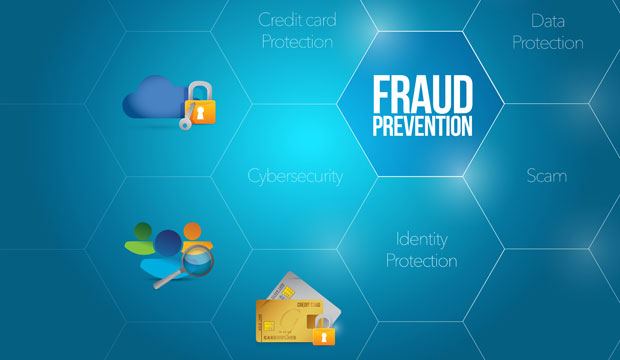E-commerce fraud is an ongoing problem for online merchants and credit card companies. It has been growing at twice the rate of e-commerce sales. Identity theft traditionally has been one of the most common sources of e-commerce fraud, but online merchants increasingly have been suffering more from chargeback fraud, which requires them to absorb the costs of disputed credit card transactions.
As phony chargebacks continue to rise, it becomes more difficult than ever to manage losses, including effective ways to prevent and track chargeback costs.
There needs to be better policing of online credit card transactions and new strategies implemented to prevent false chargebacks. There also needs to be more transparency in billing for fraud detection services, so merchants can track and project chargeback losses accurately.
New billing technologies have been making it easier to manage chargebacks, but before delving into those solutions let’s take a closer look at chargeback fraud and how it works.
The Problem With Chargebacks
E-commerce merchants are especially susceptible to chargeback fraud since they are further removed from the actual credit card holder. Card-not-present transactions are a particular problem for etailers, since with fraudulent chargeback transactions of this type, the burden falls to the merchant to make good on the payment.
In a card-present transaction, the cardholder physically presents the card to make a purchase. With an in-store card-present purchase, the merchant can verify the cardholder’s identity using a driver’s license or another form of identification, and can collect a signature for verification.
With today’s chip-enabled cards, the transaction is even more secure, since the chip card generates a unique transaction code for each purchase. If the merchant follows proper procedures in handling the transaction, the liability for any fraud lies with the card issuer — that is, the credit card company or the bank.
Unfortunately, in e-commerce, it’s the merchants who have to deal with card-not-present transactions, because the cardholder is not physically present with a credit card. Since there is no way to verify the cardholder’s identity or the validity of the card using a chip, the sale is considered less secure. Fraudulent online transactions are the merchant’s liability — the rationale being that it’s the merchant’s option to accept a less secure credit card transaction.
The fees to merchants for accepting fraudulent transactions often are more than twice the cost of the sales, since the merchants can’t recover the shipped goods. They suffer the loss of the fraudulent shipments, as well as refunds to the consumers who were scammed.
Chargeback fraud isn’t limited to stolen cards. Fifty percent of chargeback fraud is classified as “friendly fraud,” according to Juniper’s estimates. That occurs when a consumer orders and pays for goods online, but then disputes the charges once the products are shipped.
Sometimes friendly fraud is an honest error. One member of a family may have placed an order, but the credit card holder is another member of the same household who mistakenly reports it, resulting in a chargeback. More often than not, friendly fraud results in re-shipping, so the merchant loses twice — once for the chargeback, and once for the loss of shipped goods.
Online merchants need to be more aware of chargebacks — not just because of the losses incurred, but also because of the impact of chargebacks on their credit rating. If the number of chargebacks exceeds 1 percent of transactions, then it’s a warning to credit card issuers that the business is high risk.
As a result, the credit card companies start imposing financial penalties and other restrictions to encourage the etailer to reduce the number of chargebacks. Once an e-merchant develops a reputation for having too many chargebacks, payment processors may be less likely to work with them.
New Ways to Combat Chargeback Fraud
There are ways to combat chargebacks. An obvious move is tightening transaction security by adding tools to verify the customer’s identity, such as credit card CVV verification and address confirmation to ensure that billing and shipping addresses match.
3D Secure is a new technical standard created by Visa and MasterCard to secure card-not-present transactions. The system verifies the buyer’s identity by requesting a personal code, usually sent as a text message or email with a one-time PIN.
“3D” stands for “3 Domain Secure,” because it verifies the three parties in the transaction: the vendor, the bank, and the credit card company (Visa or MasterCard). It also excuses fraud liability for merchants that use the system.
Another innovative approach to fighting chargebacks is identifying potentially fraudulent transactions in real time. Using a centralized database of confirmed fraud information reported by credit card issuers, merchants can query the system to verify credit card transactions in real time, giving them a window to stop the sale and refund the money before the chargeback takes place.
Instead of incurring losses due to chargebacks, merchants pay a nominal fee for the database service to validate transactions in advance, saving thousands of dollars, eliminating chargeback disputes, and improving the customer experience.
What to Look for in Chargeback Prevention Services
In addition to prevention, e-commerce merchants need to account for chargeback losses and understand how their business is being affected by chargebacks. Part of the objective is to eliminate disputes with credit card providers. To accomplish that requires a level of transparency that reveals everything there is to know about a transaction, including the costs to prevent fraud.
When shopping for a solution for chargeback monitoring and prevention, online merchants want a security platform that offers reliability — that is, the ability to monitor every transaction in real time and flag those that are potentially fraudulent before chargeback fees can be incurred.
They also want transparency, with detailed reports and a view into specific transactions to identify patterns and reduce chargeback attacks. Moreover, they want accuracy, ensuring that billing for chargeback services is structured, so merchants are being charged only for problem transactions, so that chargeback fraud prevention costs don’t escalate.
They also want a fair and accurate billing model to optimize costs to fight fraud. Rather than paying for a simple service subscription or a flat rate per month, it makes more sense to charge based on the level of activity.
A one-price-fits-all model can’t accommodate for variables such as the number of transactions that need to be processed, or the number of incidents detected. For both fraud prevention services and online merchants, there has to be a more equitable billing model based on usage and activity levels.
There are different pricing models for different types of chargeback prevention services that will suit different types of merchants, but they all require complex billing solutions. Billing can be based on credit card transaction volume, and pricing for real-time chargeback monitoring. Detection can be billed per transaction, per transaction value, by transaction outcome, or using other criteria. Global businesses also have to accommodate international currencies, including exchange rates.
As with the fraud prevention services themselves, billing for chargeback monitoring has to be reliable, transparent and accurate. Reliability means that billing reflects all transactional traffic, and the system is monitoring — and therefore billing — for everything.
Billing transparency means e-commerce users get detailed reports of activity. Fraud protection services may even provide real-time dashboards to allow their customers to monitor activity.
Billing accuracy is based on monitoring performance based on the specific customer contract. However services are charged, accurate billing not only ensures accurate payments, but also provides metrics to demonstrate changes in the volume and nature of chargeback fraud.
The Value of Agile Billing in Chargeback Fraud Prevention
Working with companies that support complex, agile billing models for services such as chargeback fraud prevention offers e-commerce customers many advantages.
Versatility and the ability to structure complex billing to suit different e-commerce models is essential. Different etailers have different business models, so they want to buy services based on transaction volume, transaction value, and other criteria. Etailers also are attracted by the ability to pay only for those services they consume, which requires reliable service monitoring and a highly flexible monetization engine on the back end.
Flexibility in pricing models is essential, because it can affect an online merchant’s credit rating. Consider that the standard industry maximum for chargebacks is 1 percent of monthly transactions.
You can calculate the chargeback rate using a simple formula: Total chargebacks per month / Total transactions per month = Chargeback rate.
If you exceed that 1 percent, then you become a higher-risk vendor to the credit card companies.
However, chargeback rates vary, because different card companies use different criteria for calculations. For example, Visa uses the number of transactions in the same month as a baseline, whereas Mastercard uses the number of transactions from the preceding month. The difference can have a significant impact on the chargeback rate, so be sure that your fraud prevention billing system can accommodate those differences to reflect the most accurate chargeback rates.
Speed in billing for chargeback fraud prevention is also important, especially for merchants that need to dispute transactions with credit card companies. Automating complex billing and revenue recognition eliminates the need for accounts receivable spreadsheets and manual processes that slow down the billing cycle as well as reduce accuracy.
The billing platform behind the fraud engine has to be able to generate accurate invoices that reflect contracting activity quickly (e.g., by a transaction, value or volume), as well as allow for various currencies and variables, such as chargeback rate calculations.
To rein in chargeback fraud, merchants need to tighten security, including contracting for a chargeback monitoring solution. They also need to have a clear understanding of the types and volume of chargebacks incurred. A good chargeback security partner will not only provide real-time monitoring, but also offer accurate, timely billing with the transparency needed to understand the sources of fraud, whether it’s merchant error, criminal fraud or chargeback fraud.













































Social Media
See all Social Media